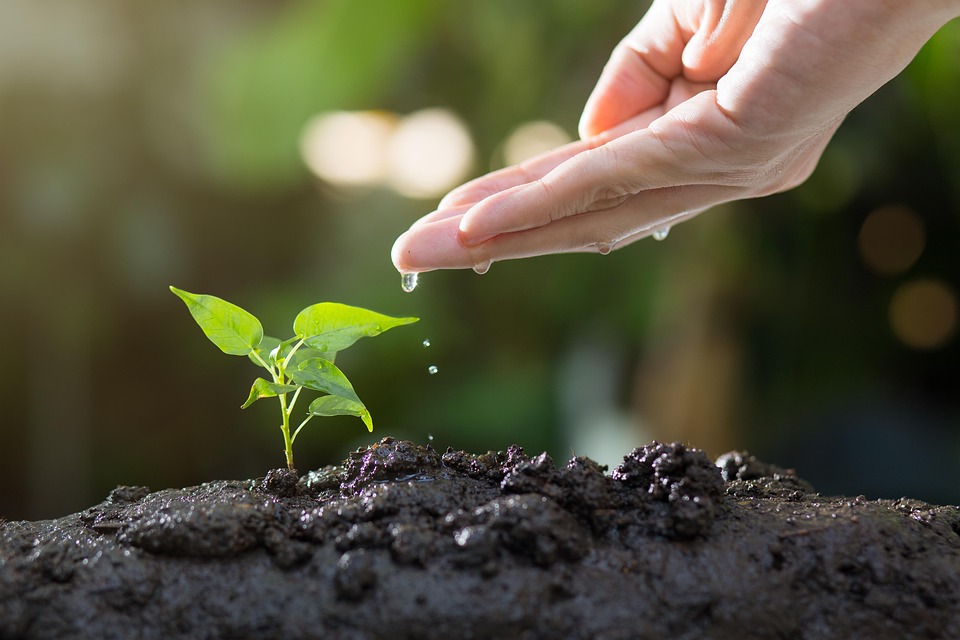# The Key to Long-Term Food Security: Sustainable Agriculture Practices
Living off the grid is a mosaic of small, rewarding moments and lessons learned from nature. Picture this: early dawn light breaking over a dew-kissed garden while bees hum with the thrill of a new day. As I delve into the rich earth, planting seeds that hold the promise of future meals, there’s an unparalleled sense of connection not only to the land but to a sustainable future. The health of our planet and the security of our food supply are intimately tied to the practices we embrace today—a reality that underlines the critical importance of sustainable agriculture.
### Understanding Sustainable Agriculture
Sustainable agriculture refers to farming methods that maintain the health of the land while providing food for current and future generations. It’s about creating systems that are environmentally sound, economically viable, and socially responsible. This multi-faceted approach acknowledges that farming isn’t just about producing food; it’s about nurturing a balanced ecosystem.
Sustainable farming practices can incorporate anything from organic farming and permaculture to agroforestry and regenerative agricultural techniques. What binds them together is their mutual goal: to create a harmonious relationship between people, animals, and the planet.
### The Importance of Biodiversity
One of the cornerstones of sustainable agriculture is biodiversity. Diverse ecosystems have a greater capacity to withstand pests, diseases, and the vagaries of climate change. Through crop rotation, intercropping, and polyculture, farmers can create a dynamic system that thrives on variety. The added bonus? Biodiversity often leads to tastier and more nutritious food!
Planting companion species—asparagus with tomatoes or basil with peppers, for example—can improve yield and reduce pest problems naturally. It keeps the ecosystem balanced while providing additional flavors in your culinary adventures.
### Soil Health: The Foundation of Food Security
Healthy soil is the cornerstone of sustainable agriculture. It acts as a living entity, teeming with organisms that decompose organic matter, cycle nutrients, and maintain water levels. Adopting practices that enhance soil health is akin to laying down a solid foundation for a house.
* **Composting:** Converting kitchen scraps and garden waste into nutrient-rich compost is a fantastic way to enrich your soil without the use of chemical fertilizers. This natural fertilizer improves soil texture, enhances moisture retention, and elevates nutrient levels.
* **Cover Cropping:** Planting cover crops like clover, vetch, or rye during off-seasons helps prevent soil erosion, suppress weeds, and add organic matter back into the soil when they’re tilled under.
* **Reduced Tillage:** Minimizing tillage preserves soil structure and enhances microbial life, leading to richer soil in the long run—think of it as giving soil a gentle massage rather than a rough wake-up call!
### Water Conservation Techniques
Water scarcity is a pressing issue in many parts of the world, emphasizing the need for sustainable practices that conserve and wisely manage water resources.
* **Rainwater Harvesting:** Collecting rainwater from roofs is an age-old practice that allows you to capture and store water for irrigation purposes. It can significantly reduce your dependency on municipal water systems.
* **Drip Irrigation:** This efficient irrigation method delivers water directly to the roots of plants, minimizing waste and ensuring that every drop counts.
* **Xeriscaping:** By designing a landscape that requires little or no irrigation, gardeners can create stunning dry gardens using native plants that thrive on minimal water. This approach conserves water while still showcasing beauty.
### The Role of Animals in Sustainable Farming
Integrating animals into farming systems can be a game changer. Not only do they provide meat, milk, and eggs, but certain practices promote a more sustainable cycle of food production.
* **Rotational Grazing:** This method involves moving livestock from one pasture to another, allowing previous pastures to recover. This approach improves soil health as animal manure replenishes nutrients and helps control weeds.
* **Polyculture with Chickens:** Chickens are excellent foragers and can help manage pests significantly. They’ll also provide fertilizer in the form of manure, making them an invaluable addition to any sustainable farm.
* **Using Bees for Pollination:** Incorporating bees not only aids in pollination but also produces honey while helping to maintain the delicate balance of your garden.
### Community Support and Local Markets
Creating a sustainable agricultural system also relies on fostering local community ties. Supporting farmers’ markets, co-ops, and community-supported agriculture (CSA) initiatives can have profound impacts on food security.
* **Farming Cooperatives:** These alliances empower farmers to share resources, knowledge, and labor, making small-scale farming more economically viable.
* **Education and Workshops:** Hosting workshops to share sustainable practices fosters a sense of community and encourages more people to grow their food. Knowledge is power, after all!
* **Celebrating Local Harvests:** Organizing seasonal festivals can elevate community spirit while promoting the importance of supporting local agriculture. Plus, who doesn’t love a good harvest feast?
### Innovative Sustainable Technologies
As the agricultural landscape evolves, innovative technologies are emerging to support sustainable practices. Here are a few cutting-edge methods:
* **Agroecology:** An approach that combines traditional farming techniques with modern science, agroecology promotes sustainable agricultural practices that respect local cultures while increasing productivity and resilience.
* **Vertical Farming:** Utilizing indoor spaces to grow food vertically maximizes yields while minimizing land usage. This urban farming method can also significantly reduce transportation emissions, bringing food closer to the city’s core.
* **Hydroponics and Aquaponics:** These systems allow for growing food with minimal resources—ideal for urban settings or areas with poor soil. Hydroponics uses nutrient-rich water instead of soil, whereas aquaponics integrates fish farming with plant cultivation.
### Pro Tips for Sustainable Farming
1. **Start Small:** If you’re just getting into sustainable gardening, begin with a manageable plot. Gradually expand as you gain confidence and knowledge.
2. **Use Native Plants:** Opt for plants that are well-adapted to your local climate. They typically require less water and are less prone to pests.
3. **Regularly Test Your Soil:** Frequent testing helps you understand your soil’s nutrient needs and guides your amendment plan.
4. **Embrace Natural Pest Control:** Introduce beneficial insects, like ladybugs, to manage pest populations without harmful chemicals.
5. **Network with Other Farmers:** Building connections can provide support, ideas, and even resources when facing challenges.
Embracing sustainable agriculture not only contributes to long-term food security but also creates a resilient and nurturing community.
### Conclusion: A Vibrant Future
As we stand at the juncture of innovation and tradition, sustainable agriculture practices offer a beacon of hope for food security. By caring for our soil, nurturing biodiversity, conserving water, and building community ties, we can create a vibrant future that flourishes on the principles of sustainability. The beauty of agriculture lies not just in the act of planting but in imagining a future where food systems thrive in harmony with nature. Join the movement—every seed planted is a step toward a more sustainable and secure tomorrow!



